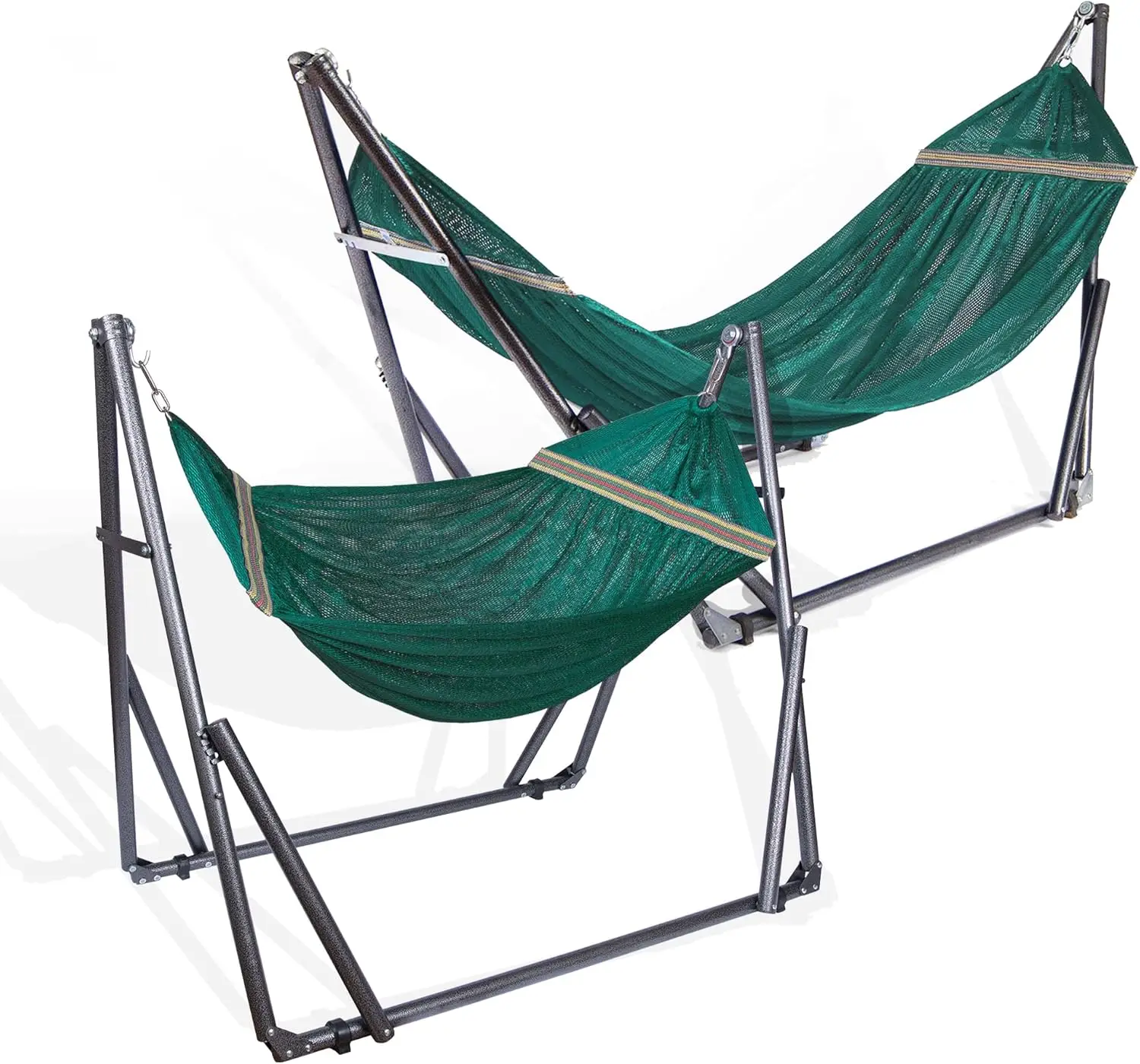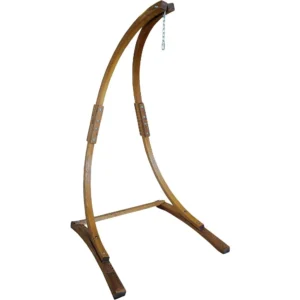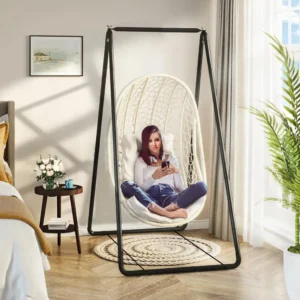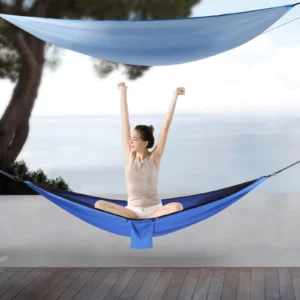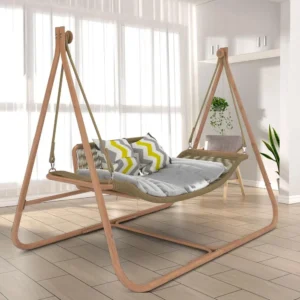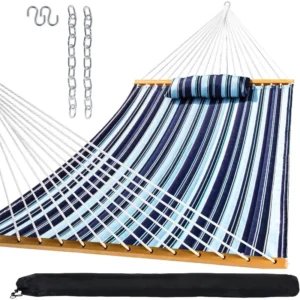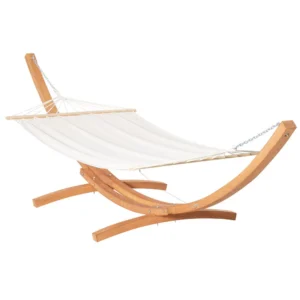Introduction: The Versatile World of Hammocks
Hammocks have transcended time and cultures as one of the most versatile and beloved relaxation tools. From their origins in Central America to modern adaptations in homes and yards worldwide, hammocks offer a unique blend of comfort and tranquility that few other furniture pieces can match. Today, hammocks have evolved from simple outdoor sleep solutions to sophisticated comfort accessories that can transform any space into a personal retreat.
When considering a hammock, one fundamental decision stands above all others: should you hang it indoors or outdoors? This choice affects everything from the materials you’ll need to the experience you’ll enjoy.
In this guide, we’ll help you navigate this important decision by covering:
- How to assess your specific hammock needs
- The key differences between indoor and outdoor placement
- Structural requirements for safe installation in both environments
- Step-by-step hanging instructions for various scenarios
- Essential accessories and maintenance tips
At Outside Luxe, our team has personally tested countless hammock setups in diverse environments. We’ve learned that the perfect hammock experience starts with thoughtful placement, and we’re excited to share our fundamental comparison of indoor and outdoor hammock placement to help you create your ideal relaxation space.
Understanding Your Hammock Needs Before Placement
Before deciding where to hang your hammock, it’s important to clarify exactly how you plan to use it. This preliminary assessment will guide all your subsequent decisions.
Purpose and Usage
Consider what role your hammock will play in your life:
- Occasional relaxation: A spot for afternoon reading or casual lounging
- Primary sleeping solution: Your main bed or frequent napping location
- Decorative element: A stylish accent that’s used sporadically
- Outdoor adventure companion: A portable option for camping or day trips
Matching Hammock Types to Locations
Different hammock styles are better suited for specific environments:
- Rope hammocks: Ideal for covered outdoor areas; require more maintenance if exposed to elements
- Fabric hammocks: Versatile for both indoor and outdoor use; more comfortable against skin
- Quilted hammocks: Best for indoor use or protected outdoor spaces
- Spreader bar hammocks: Create a flatter lay but require more stable mounting
- Brazilian/non-spreader bar hammocks: More forgiving with mounting distances; better for adapting to different spaces
Space Considerations
Before purchasing, measure your intended space carefully. Understanding hammock weight capacity guidelines is crucial for safety and durability. Most single hammocks require:
- 10-12 feet (3-3.7 meters) of linear space between anchor points
- At least 7 feet (2.1 meters) of width for comfortable entry/exit
- Minimum 18 inches (45 cm) clearance from the ground when weighted
If your available space doesn’t meet these requirements, consider specialized hammocks and stands designed for compact areas, which offer more flexibility in placement options.
Key Factors in Hammock Placement Decisions
Making an informed decision about where to hang your hammock requires balancing several important considerations. Let’s explore the key factors that will influence your perfect hammock spot.
Space Requirements
Every hammock style has specific spatial needs:
| Hammock Type | Minimum Length | Ideal Width | Height Clearance |
|---|---|---|---|
| Brazilian/Non-Spreader | 10-12 ft (3-3.7 m) | 5-6 ft (1.5-1.8 m) | 18-24 in (45-60 cm) |
| Spreader Bar | 11-15 ft (3.4-4.6 m) | 4-5 ft (1.2-1.5 m) | 18-24 in (45-60 cm) |
| Chair Hammock | 6-8 ft (1.8-2.4 m) | 3-4 ft (0.9-1.2 m) | 12-18 in (30-45 cm) |
The 30-Degree Angle Rule
For optimal hammock comfort and stability, aim to hang your hammock with approximately a 30-degree angle from the horizontal when weighted. This creates the perfect sag for a comfortable position while reducing stress on anchor points.
Environmental Factors
Consider these environmental elements when choosing placement:
- Sun exposure: Will direct sunlight fade your hammock or make it too hot?
- Wind patterns: Is the area protected or subject to strong breezes?
- Privacy level: Will you feel comfortable relaxing in the location?
- View and surroundings: What will you see while relaxing?
- Noise levels: Is the area quiet enough for restful relaxation?
Material Considerations
Different materials respond differently to environmental conditions:
- Cotton: Comfortable but requires protection from moisture
- Polyester/Nylon: More weather-resistant but can heat up in direct sun
- Olefin/Sunbrella: Best for full outdoor exposure; resistant to UV and moisture
- DuraCord: Combines comfort and weather resistance
Finding the perfect hammock placement for home and garden often means balancing these factors with your personal preferences and existing space constraints.
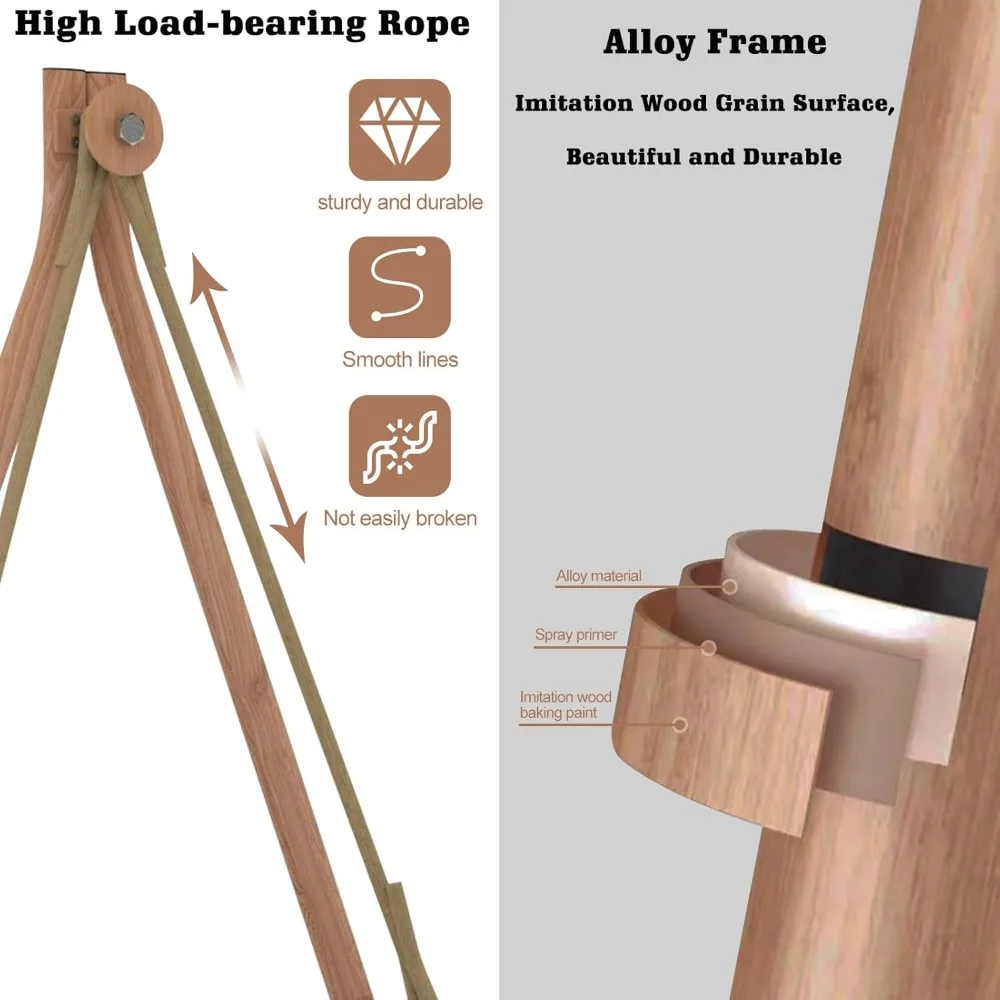
Indoor Hammock Placement: Creating Your Personal Retreat
Bringing a hammock indoors creates a unique relaxation spot that can be enjoyed year-round, regardless of weather conditions. Indoor placement offers several distinct advantages while presenting its own set of considerations.
Advantages of Indoor Placement
- Year-round accessibility: Enjoy your hammock regardless of season or weather
- Climate-controlled environment: Consistent temperature and protection from elements
- Extended hammock lifespan: Less exposure to UV rays and moisture
- Privacy and convenience: Always available without concern for onlookers
- Unique design element: Creates a distinctive and inviting interior focal point
Best Rooms for Indoor Hammocks
Some spaces naturally lend themselves to hammock placement:
- Living rooms: Create a conversation piece and alternative seating option
- Bedrooms: Perfect for reading nooks or alternative sleeping arrangements
- Sunrooms: Blend indoor comfort with outdoor views
- Home offices: Provide a thinking and brainstorming retreat
- Covered porches: Bridge the gap between indoor and outdoor environments
Structural Considerations
Before installing an indoor hammock, you must verify that your walls or ceiling can support your weight. It’s important to understand if it’s safe to hang a hammock indoors in your specific home structure.
Critical Warning: Standard drywall alone cannot support hammock weight. Always anchor into structural elements like studs or joists.
Indoor Mounting Options
Choose the mounting style that works best for your space:
- Wall-to-wall mounting: Requires two sturdy walls within appropriate distance
- Ceiling mounting: Uses exposed beams or ceiling joists for overhead support
- Stand-based solutions: Freestanding options like hammock chairs with stands that don’t require permanent installation
- Doorway mounting: Specialized systems that use door frame pressure (for lighter hammocks only)
Aesthetic Integration
Your indoor hammock should complement your existing décor:
– Consider color coordination with your room’s palette
– Choose a hammock style that matches your interior design theme
– Add complementary pillows or throws that tie into your overall scheme
– Position to create visual balance within the room
The best places to hang a hammock indoors combine structural security with aesthetic appeal, creating spaces that invite relaxation while enhancing your home’s character.
Finding Structural Support for Indoor Hammocks
Proper structural support is non-negotiable for safe indoor hammock installation. This section guides you through identifying and utilizing appropriate structural elements.
Locating Wall Studs and Ceiling Joists
For secure anchoring, you must find the hidden structural framework of your home:
- Use a stud finder: Move the device horizontally across the wall until it indicates a stud
- Verify with small nails or drill: Make a tiny test hole to confirm wood presence
- Map the pattern: Studs are typically spaced 16 or 24 inches (40.6 or 61 cm) apart
- For ceiling joists: Follow the same process across the ceiling, noting that joists run in a single direction
Essential Tools for Indoor Installation
Gather these tools before beginning installation:
– Stud finder
– Drill with appropriate bits
– Level
– Tape measure
– Socket wrench or screwdriver
– Pencil for marking
Hardware Selection and Weight Ratings
| Hardware Type | Weight Capacity | Best For |
|---|---|---|
| Eye bolts (lag screw style) | 300-500 lbs (136-227 kg) | Wall or ceiling mounting into studs/joists |
| Heavy-duty hooks | 200-400 lbs (91-181 kg) | Ceiling mounting for lighter hammocks |
| Hammock wall anchors | 300-600 lbs (136-272 kg) | Specialized for hammock installation |
| Toggle bolts | NOT RECOMMENDED | Cannot support dynamic hammock weight |
Safety Warning: Always choose hardware rated for at least 3 times your body weight to account for dynamic forces when entering or moving in the hammock.
When to Seek Professional Help
Consider consulting a professional if:
– Your home has unusual construction methods
– You’re uncertain about load-bearing capacity
– You’re working with historical or delicate structures
– You lack confidence in DIY structural projects
Understanding hammock installation requirements and safety guidelines is essential before proceeding with any installation. For those who prefer avoiding structural modifications, hanging egg chair sets with stands provide an excellent alternative that doesn’t require drilling into walls or ceilings.
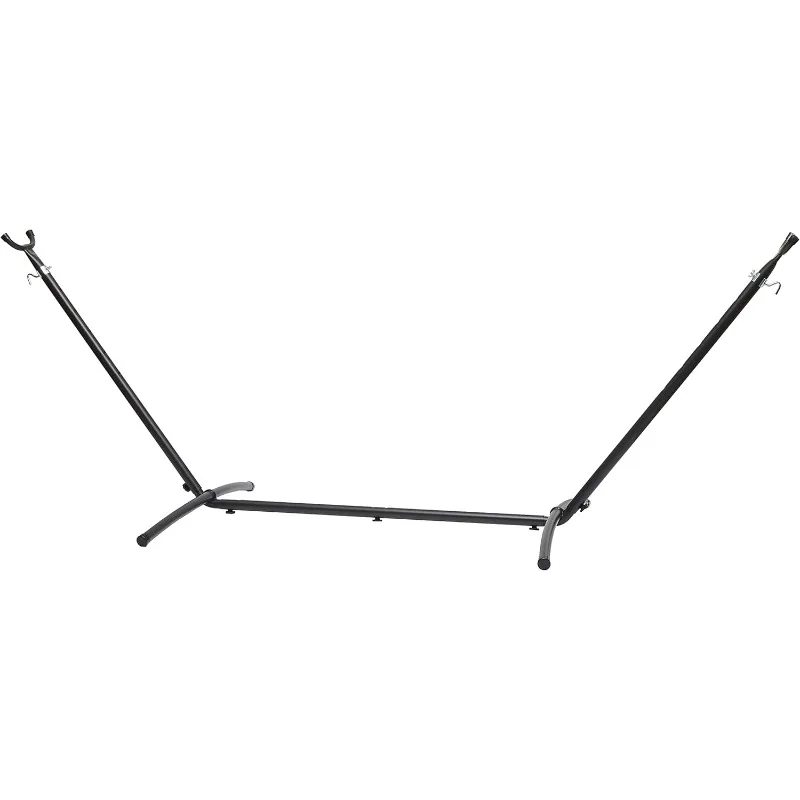
Outdoor Hammock Placement: Embracing Nature
Taking your hammock outdoors connects you with nature while offering spacious relaxation options. This natural setting creates a different experience with its own set of considerations.
The Appeal of Outdoor Hammocks
Outdoor placement offers unique benefits:
– Natural surroundings enhance relaxation
– Fresh air and gentle breezes complement the swaying motion
– Sunlight (with proper protection) provides warmth and vitamin D
– Broader views of landscapes, gardens, or starry skies
– More space for larger hammocks or multiple setups
– Connection with seasonal changes and wildlife
Selecting Prime Outdoor Locations
The most enjoyable outdoor hammock spots typically feature:
– Partial shade throughout the day (especially during peak sun hours)
– Protection from prevailing winds
– Reasonable distance from high-traffic areas
– Pleasant views or surroundings
– Level ground beneath for safe entry/exit
– Proximity to your home for convenience
Weather Considerations
Different climate challenges require specific adaptations:
Hot/Sunny Climates:
– Prioritize shade or install a canopy
– Choose light-colored, breathable fabrics
– Consider ultraviolet-resistant materials
Rainy Regions:
– Select quick-drying, water-resistant materials
– Install weather covers or rain flies
– Use hammock sleeves when not in use
– Ensure adequate drainage beneath
Seasonal Climates:
– Develop a storage plan for off-seasons
– Consider portable options that can be easily relocated
– Use weather-appropriate accessories for extended seasons
Many people wonder if it’s okay to leave a hammock outside. While modern outdoor hammocks are designed with weather resistance in mind, proper care and occasional storage will significantly extend their lifespan.
Balancing Permanence and Flexibility
Your outdoor setup can range from temporary to permanent:
– Portable stands: Offer flexibility to move with sun patterns or social gatherings
– Semi-permanent setups: Installed for seasons but removed during harsh weather
– Permanent installations: Integrated into landscape design with fixed posts or permanent structures
For the perfect blend of durability and aesthetic appeal, many homeowners choose wooden hammocks and stands that complement natural outdoor environments while providing reliable support.
Understanding the best indoor and outdoor hammock locations helps you maximize enjoyment of your outdoor space through thoughtful hammock placement.
Selecting and Creating Secure Outdoor Anchor Points
Creating secure anchor points is essential for safe outdoor hammock enjoyment. Whether using natural features or installing permanent supports, proper technique ensures stability and prevents damage.
Using Trees as Natural Anchors
Trees provide ideal natural support when selected and used properly:
Tree Selection Criteria:
– Minimum 8-inch (20 cm) diameter trunk for sufficient strength
– Healthy, living trees without signs of disease or damage
– Deep-rooted species that resist uprooting (oak, maple, pine)
– Firmly planted without excessive lean
Tree Protection Methods:
– Wide tree straps (at least 1-inch/2.5 cm wide) distribute pressure
– Never use rope directly against bark, which can cause damage
– Rotate anchor points periodically on frequently used trees
– Install at least 6 feet (1.8 meters) above ground level
Installing Permanent Posts
For areas without suitable trees, posts offer reliable anchoring:
- Select 4×4 or 6×6 pressure-treated lumber or metal posts
- Dig holes at least 2 feet (60 cm) deep, or one-third the post height
- Pour concrete footings for stability, ensuring proper drainage
- Allow concrete to cure fully before hanging hammock (typically 24-48 hours)
- Install eye bolts at appropriate height (typically 4-5 feet/1.2-1.5 meters)
Using Existing Structures
Many homes offer ready-made anchoring options:
– Deck posts (verify they’re structural, not decorative)
– Pergola or gazebo beams
– Sturdy porch columns
– Masonry walls with appropriate anchors
– Fence posts (only if exceptionally sturdy and properly set)
Portable Options for Flexibility
When permanent installations aren’t possible:
– Freestanding hammock stands
– Portable hammock posts with ground stakes
– Tensegrity structures that distribute weight without deep anchoring
For maximum stability in varied outdoor environments, many users prefer heavy-duty hammock sets that come with reinforced stands designed to withstand outdoor conditions while supporting higher weight capacities.
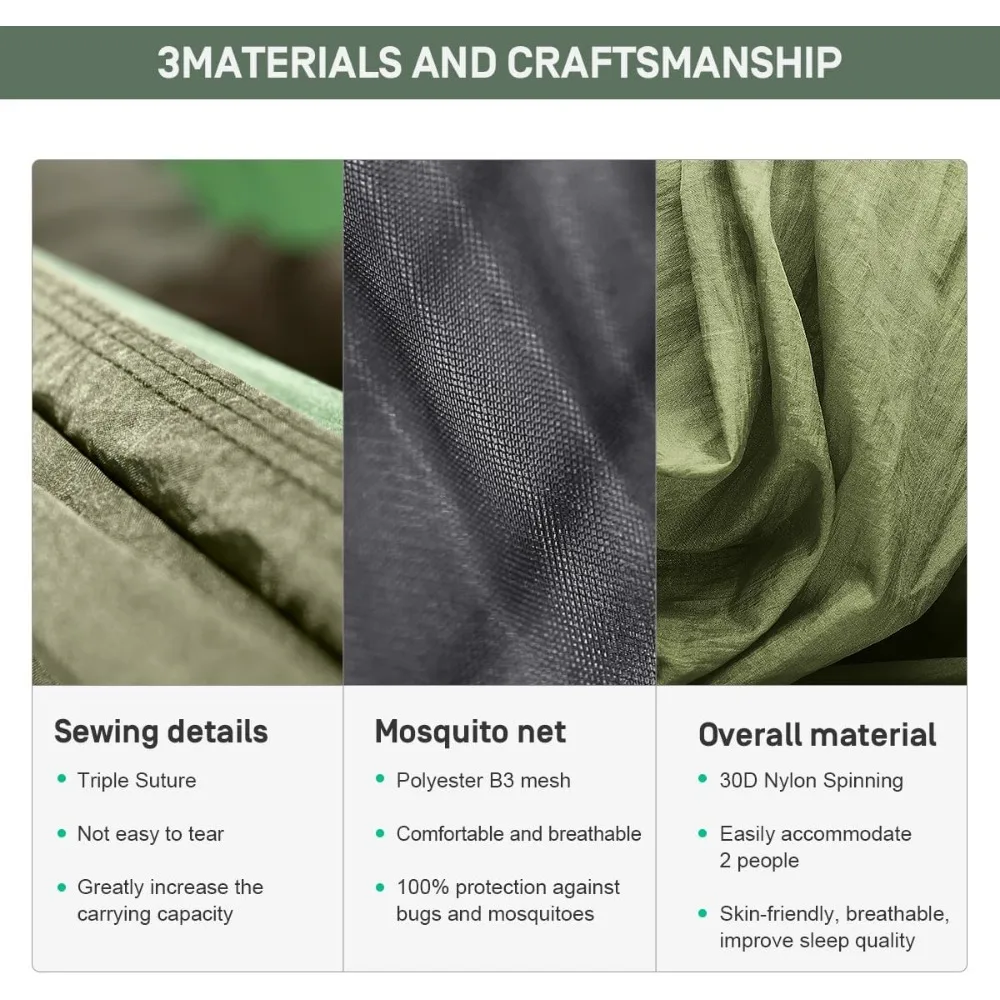
Direct Comparison: Indoor vs. Outdoor Placement
When deciding between indoor and outdoor hammock placement, understanding the key differences helps you make the best choice for your needs and environment.
Comprehensive Comparison
| Factor | Indoor Placement | Outdoor Placement |
|---|---|---|
| Weather Protection | Complete protection from elements | Requires weather-resistant materials |
| Usage Season | Year-round | Often seasonal depending on climate |
| Space Requirements | Limited by room dimensions | Generally more flexible |
| Installation Complexity | Requires finding structural supports | More options but weather considerations |
| Privacy | High | Variable depending on location |
| Maintenance | Minimal | Regular cleaning and weather protection |
| Material Durability | Almost any material works | Requires weather-resistant options |
| Aesthetic Integration | Must complement interior design | Blends with landscaping and outdoor décor |
| Accessibility | Always available | Weather-dependent access |
| Setup Permanence | Typically more permanent | Can range from temporary to permanent |
Ideal Scenarios for Each Option
Best for Indoor Placement:
– Year-round hammock access is a priority
– Limited outdoor space is available
– Privacy is highly valued
– Weather in your region is frequently unfavorable
– You prefer not to perform regular maintenance
– You want to create a unique interior design element
Best for Outdoor Placement:
– Connection with nature is important
– Space constraints indoors limit options
– Multiple users need a larger relaxation area
– Local climate offers extended favorable seasons
– You enjoy maintaining outdoor living spaces
– Natural surroundings enhance your relaxation
Many hammock enthusiasts ultimately decide that having options for both environments maximizes enjoyment. Our comprehensive indoor vs. outdoor hammocks buyer’s guide provides additional details to help with this important decision.
Essential Hammock Accessories for Both Environments
The right accessories can transform your hammock experience, enhancing comfort, functionality, and longevity in any environment.
Universal Hammock Accessories
These essentials improve any hammock setup:
- Suspension systems: Tree straps, chains, or ropes that connect your hammock to anchor points
- Pillows and bolsters: Provide neck and head support for extended comfort
- Underquilts or pads: Add insulation for cooler temperatures
- Storage pouches: Keep books, devices, or drinks within easy reach
- Entry assistance: Steps or small stools for easier access
Environment-Specific Accessories
Indoor Accessories:
– Decorative pillows that complement room décor
– Matching throws for cooler evenings
– Wall-mounted hammock storage hooks
– Dimmable lighting nearby for reading
– Floor protection for areas beneath stands
Outdoor Accessories:
– Weather-resistant hammock covers when not in use
– Bug nets for protection from insects
– Canopies or rain flies for sun and rain protection
– Weather-resistant storage bags
– Ground covers or mats for barefoot comfort
Material Considerations
Choose accessories that match your primary environment:
– Indoor accessories can prioritize comfort and aesthetics
– Outdoor accessories should emphasize weather resistance and durability
– Transitional setups need versatile, quick-drying materials
Proper accessories not only enhance your experience but also protect your investment. Quality hammock stands, bug nets, and weather protection can dramatically extend the life of your hammock while making it more comfortable and functional year-round.
Dark Wood Hammock Sets, Porch Swing Chair Sets
$653.82 Select options This product has multiple variants. The options may be chosen on the product pageA-Frame Stand Hammock Sets, Swinging Hammock Chair Sets
$154.62 Select options This product has multiple variants. The options may be chosen on the product pageCamping Hammock Sets with Bug Net, Ultralight Camping Hammock Sets
$139.72 Select options This product has multiple variants. The options may be chosen on the product pageLight Wood Hammock Sets, Swinging Hammock Chair Sets
$1,359.35 Select options This product has multiple variants. The options may be chosen on the product pageClassic Wooden Stand Hammock Sets, Heavy Duty Hammock Sets
$1,061.68 Select options This product has multiple variants. The options may be chosen on the product page
Installation Guide: Step-by-Step Process
Proper installation ensures both safety and comfort for your hammock setup. Follow these detailed steps for secure mounting in both indoor and outdoor environments.
Essential Tools and Hardware
For All Installations:
– Tape measure
– Level
– Pencil for marking
– Adjustable wrench
Additional Tools for Indoor Installation:
– Stud finder
– Drill with appropriate bits
– Socket wrench
– Wall anchors (for masonry)
Additional Tools for Outdoor Installation:
– Post hole digger (if installing posts)
– Shovel
– Concrete mix (for permanent posts)
– Tree-friendly straps
Indoor Installation Steps
Wall-to-Wall Mounting:
1. Locate and mark wall studs using a stud finder
2. Measure to ensure proper height (typically 4-5 feet/1.2-1.5 meters from floor)
3. Verify distance between mounting points matches hammock length plus 2-3 feet (0.6-0.9 meters)
4. Drill pilot holes into the center of studs
5. Install eye bolts or hammock hooks, turning until threads are no longer visible
6. Test by gradually applying weight before full use
Ceiling Mounting:
1. Locate ceiling joists
2. Mark mounting points aligned with joists
3. Drill pilot holes directly into joists
4. Install ceiling hooks or eye bolts rated for overhead suspension
5. Attach hammock using appropriate hardware or rope
6. Test gradually with increasing weight
Outdoor Installation Steps
Tree Mounting:
1. Select healthy trees with appropriate spacing
2. Wrap tree straps around trunks at 4-5 feet (1.2-1.5 meters) height
3. Ensure straps are flat against bark with no twists
4. Connect hammock using carabiners or S-hooks
5. Adjust to achieve approximately 30-degree angle when weighted
6. Test gradually before full relaxation
Post Installation:
1. Mark post locations based on hammock length plus 2-3 feet (0.6-0.9 meters)
2. Dig holes at least 2 feet (0.6 meters) deep
3. Place posts in holes and check for plumb with level
4. Fill holes with concrete, creating slight slope away from post for drainage
5. Allow concrete to cure completely (24-48 hours)
6. Install eye bolts and hang hammock
7. Test thoroughly before regular use
Achieving Proper Hammock Hang
The ideal hammock setup has:
– 30-degree angle from horizontal when weighted
– 18-inch (45 cm) height from ground at lowest point when weighted
– Appropriate “sag” in middle when lying diagonally
Understanding indoor and outdoor hammock safety guidelines is essential for any installation method. Taking time to install properly prevents accidents and ensures years of comfortable relaxation.
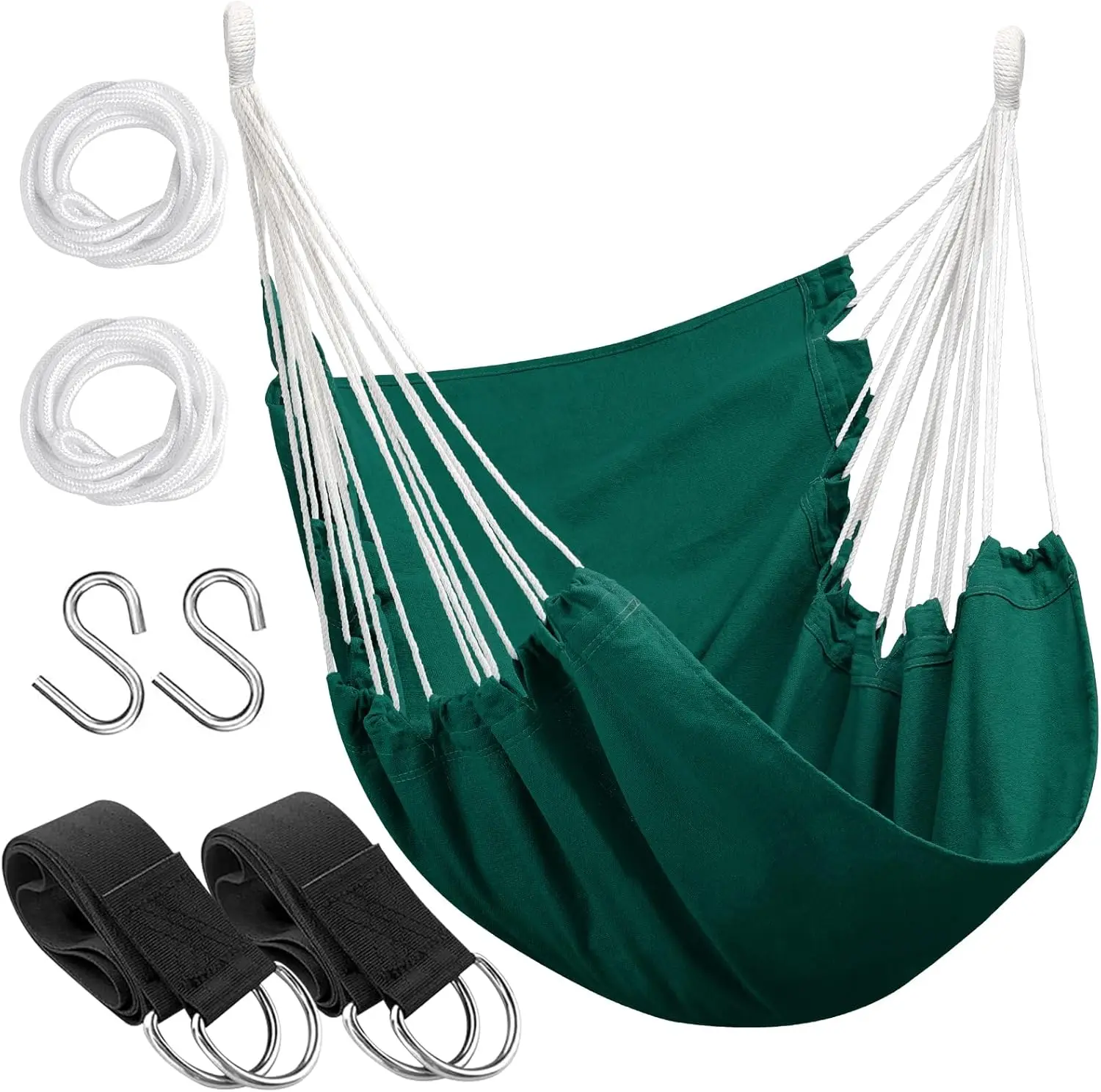
Safety Considerations for All Hammock Placements
Safety should be your top priority regardless of where you hang your hammock. Proper precautions prevent accidents and ensure peace of mind during relaxation.
Weight Capacity Guidelines
- Always respect rated limits: Never exceed the manufacturer’s stated weight capacity
- Apply safety margin: Stay at least 10% below maximum rated weight
- Account for dynamic forces: Movement creates greater stress than static weight
- Multiple users: Be especially cautious when more than one person uses the hammock
Regular Safety Inspections
Develop a habit of checking these critical points before each use:
– Fabric integrity: Look for tears, fraying, or weakness
– Suspension points: Verify anchors remain secure
– Support structures: Confirm no movement or weakening
– Hardware condition: Check for rust, bending, or wear
– Rope or strap condition: Examine for fraying or sun damage
Safe Entry and Exit
Proper technique prevents the most common hammock accidents:
1. Test weight gradually before fully committing
2. Place one hand on each side of the hammock to stabilize
3. Sit down slowly in the center before swinging legs up
4. Exit by sitting up first, then placing feet firmly on ground
5. Never jump or bounce into a hammock
Warning Signs Requiring Attention
Stop using your hammock immediately if you notice:
– Creaking or unusual sounds from anchor points
– Visible stretching or deformation of hardware
– New tears or rapidly developing thin spots in fabric
– Shifting or movement of mounting hardware
– Any feeling of instability during use
Creating the perfect hammock haven means balancing comfort with safety precautions. A properly installed hammock offers both security and relaxation.
Maintaining Your Hammock in Different Environments
Proper maintenance extends the life of your hammock and ensures continued safety and comfort. Different environments require specific care approaches.
Indoor Hammock Maintenance
Indoor hammocks generally require less maintenance but still benefit from regular care:
– Vacuum fabric hammocks periodically to remove dust and debris
– Spot clean stains promptly with appropriate cleaners for the material
– Tighten hardware every few months as normal use can loosen connections
– Rotate hammock position occasionally to prevent uneven wear
– Store in breathable bag if not in use for extended periods
Outdoor Hammock Care
Outdoor hammocks face more challenging conditions and need more attention:
– Remove and store during severe weather events
– Clean more frequently to remove pollen, bird droppings, and environmental debris
– Apply fabric protectants designed for outdoor furniture
– Allow to dry completely before folding or storing
– Inspect more regularly for UV damage and weathering
Material-Specific Cleaning Guidelines
| Material | Cleaning Method | Special Considerations |
|---|---|---|
| Cotton | Hand wash with mild soap; air dry | Never use bleach; store completely dry |
| Polyester/Nylon | Machine washable (gentle); air dry | Can handle more frequent washing |
| Sunbrella/Weather-resistant | Brush off debris; clean with mild soap | Can be left outdoors longer; highly resistant |
| Rope hammocks | Hose down; occasional mild soap | Ensure complete drying between wood slats |
Seasonal Storage Tips
When storing your hammock for extended periods:
– Clean thoroughly and ensure completely dry
– Fold or roll loosely to avoid permanent creases
– Store in breathable cotton bag, never plastic
– Keep in climate-controlled environment if possible
– Place in elevated location safe from pests
For maximum convenience, many users appreciate portable hammocks and stands that can be easily relocated between environments or quickly stored when not in use.
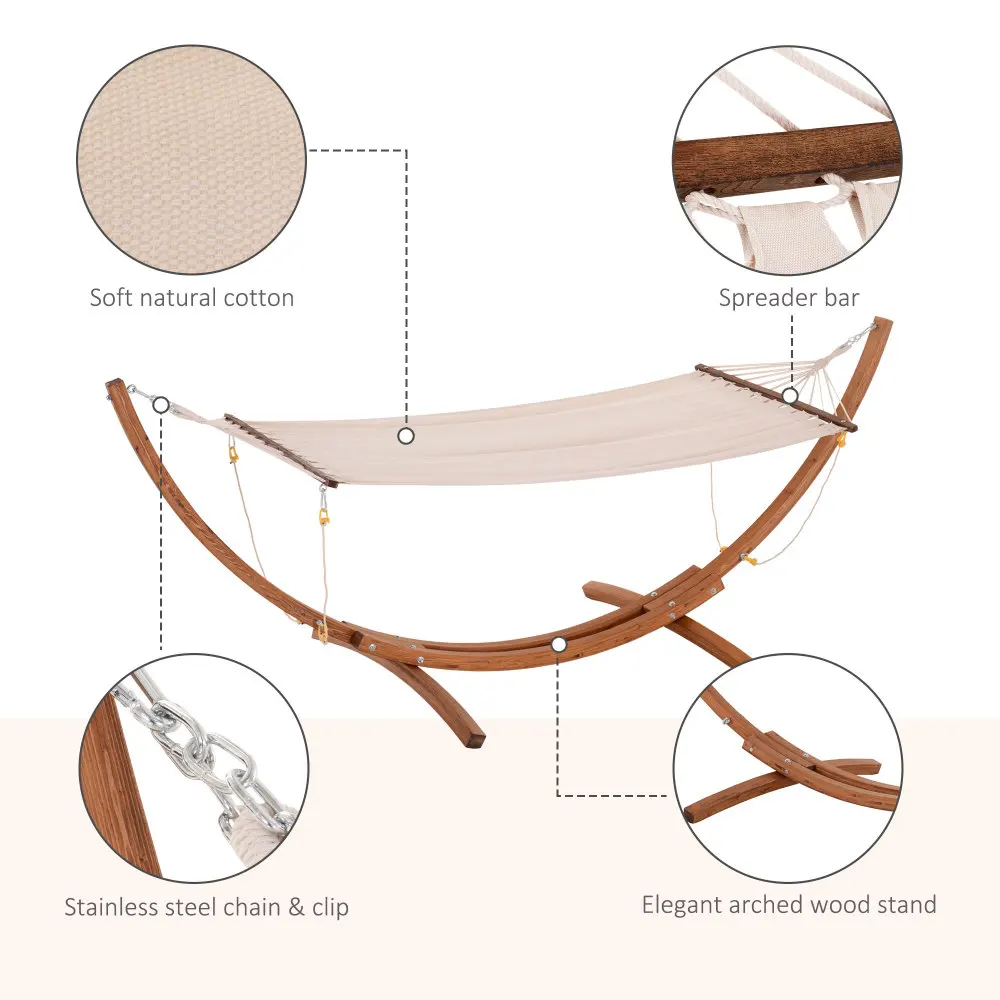
Frequently Asked Questions About Hammock Placement
Can I hang a hammock in a small apartment?
Yes! Even small spaces can accommodate hammocks. Consider a hammock chair, wall-mounted hammock with stand, or portable stand that can be stored when not in use. Focus on compact designs specifically engineered for smaller spaces.
How do I hang a hammock without drilling holes?
Several options exist: freestanding hammock stands, doorway tension kits (for lightweight hammocks only), or over-the-door hooks with reinforced frames. These solutions work well for renters or those who prefer not to modify walls.
Is it safe to sleep in a hammock regularly?
Yes, many cultures use hammocks as primary sleeping solutions. For regular sleep use, choose non-spreader bar designs that cradle your body and allow diagonal positioning. Add a pillow for neck support and consider an underquilt for temperature regulation.
How much weight can hammock hooks support?
Properly installed hammock hooks mounted into studs or joists typically support 300-600 pounds (136-272 kg), depending on the hardware quality and installation method. Always check manufacturer ratings and install as directed.
Can hammocks damage my trees?
Hammocks can damage trees if improperly hung. Always use wide tree straps (at least 1-inch/2.5 cm) rather than rope, rotate hanging locations periodically, and only use healthy trees with at least 8-inch (20 cm) trunk diameter. Never nail or screw directly into trees.
How do I protect my outdoor hammock from sun damage?
Position hammocks in partial shade when possible, choose UV-resistant fabrics like Sunbrella or solution-dyed acrylics, apply fabric protectants designed for outdoor use, and consider hammock sets with shade canopies for additional protection. Store hammocks when not in use for extended periods.
What’s the best indoor room for a hammock?
The best room depends on your intended use. Living rooms offer social relaxation spaces, bedrooms provide private retreats, sunrooms blend indoor comfort with outdoor views, and home offices create thinking spaces. Ensure adequate clearance and structural support in any location.
Making Your Final Decision: Indoor or Outdoor?
Choosing between indoor and outdoor hammock placement ultimately comes down to balancing your priorities, environment, and intended use. Both options offer unique benefits that enhance relaxation and well-being.
Key Decision Factors
When making your final choice, consider these crucial elements:
– Available space: Do you have more suitable options indoors or outdoors?
– Climate and seasons: How many months will outdoor placement be comfortable?
– Usage frequency: Will daily use make indoor convenience more important?
– Aesthetic preferences: Where will the hammock best complement your existing décor?
– Installation constraints: Which location offers more suitable mounting options?
– Privacy needs: Do you prefer sheltered relaxation or open-air environments?
Embracing Flexibility
Many hammock enthusiasts find that the best solution isn’t an either/or decision. Consider these flexible approaches:
- Seasonal rotation: Use outdoor placement during favorable weather and move indoors during extreme seasons
- Multiple hammocks: Dedicate different styles to different environments based on their strengths
- Portable systems: Invest in quick-setup hammock sets that can transition between environments
- Hybrid spaces: Explore semi-outdoor areas like screened porches, sunrooms, or covered patios that blend indoor and outdoor benefits
Final Considerations
Whichever placement you choose, remember these universal principles:
– Safety always comes first—never compromise on proper installation
– Regular maintenance extends the life of your hammock in any environment
– Your comfort preferences should guide your decision
– The perfect hammock creates a personal retreat that enhances your well-being
At Outside Luxe, we believe that the ideal hammock experience comes from thoughtful placement that matches your lifestyle. Whether you choose indoor comfort, outdoor connection with nature, or a flexible approach that embraces both, the perfect hanging spot awaits—ready to transform ordinary moments into extraordinary relaxation.

